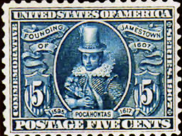The Obvious Can Be Difficult To See — John F. Fanselow
. . . the obvious can be very difficult for people to see.
(Bateson, 1972, p. 429)
Why? According to Bateson, it is because “. . . people are self-corrective systems. They are self-corrective against disturbance, and if the obvious is not of a kind that they can easily assimilate without internal disturbance, their self-corrective mechanisms work to sidetrack it.”
I illustrate the theme with his sorting activity. Write down which stamps below contain these categories:
Sources of heat
Women
Water
Non-English




I have asked hundreds of people to sort the 4 stamps using their own categories. Hardly any used four categories I asked you to use. Even with Non-English as a label, few wrote Olympiad, XIII or Los Angeles in stamp 1 or Graf Zeppelin in stamp 3 or Pocahontas in 4. The torches in 1 and the engines in 3 were rarely seen. It usually takes quite a bit of time to notice the clouds and the globe showing the oceans in 1 and 3.
We are used to looking at denominations, country and maybe the date on stamps. Knowing that the first stamp has torches is not particularly important information. Obviously Lincoln is the focus of the second stamp and not the two women engraved on the sides as decoration.
What I just asked you to do with the stamps is central to the understanding of our teaching.
1. By using labels to highlight features that are not obvious, you had to analyze. Of course in looking at your teaching you should use labels you are familiar with initially. Ones I often hear include these:
off task on task
teacher talk student talk
clear explanation
unclear explanation
But as you look at samples of your teaching, with students and colleagues if possible, you will all create new labels: necks straight, students using erasers every time I say “Mistakes are OK”, using their first language to clarify what I am doing or to chat. The more original and the less use of jargon from methods books the better.
2. I asked you to look at a small amount of data in different ways. If you transcribe a recording that fills one A4 sheet of paper, it will be enough data to see something new about what you and your students are doing. The point is to look at a small amount of data from multiple perspectives rather than to look at a lot of data from one perspective.
3. Some make judgments like “Ugly design, boring color” in the process of sorting stamps. Judgments are very, very common when teachers first hear what they say and their students do. “Wow, I talk too much; some students wrote too slowly.” I used to encourage teachers not to judge but advocate writing judgments down. Then, look for examples in the recording and transcription that support the judgments and do not support their judgments. And then write ways that what you initially think is negative—like students writing slowly—might be positive. As teachers consider how talking a lot might be helpful some have asked their students to transcribe their talk. They realize that much of what they say is natural but that in fact students do not understand them. As they transcribe and practice teachers’ language, they improve their listening and master many of the patterns.
I am not suggesting that you should not vary the amount of talk but rather to see how what we initially think is positive or negative can in fact be the opposite.
4. I urge you to spend fifteen minutes twice a week. This adds up to a lot of time in a term but one purpose of the analysis is to plan a change in your teaching so transcribing and analyzing becomes planning time.
634 Words
Grade Level 8.3
Flesch Reading Ease 65%
Connect with John, Chuck, Ratnavathy, Chiew, Josette, Kevin and other iTDi Associates, Mentors, and Faculty by joining iTDi Community. Sign Up For A Free iTDi Account to create your profile and get immediate access to our social forums and trial lessons from our English For Teachers and Teacher Development courses.



Hi John,
I love the ideas of building up a set of jargon free labels/categories to describe what we and our students do in the classroom. I have my students build up categories to describe vocabulary. Those categories are a great hook for them to be able to not only remember, but make connections between words/phrases/chunks of language. I can see that building a set of labels for what I do in class could help me see some of he ways my behaviors and my students’ behaviors are tied together. And sharing and comparing the labels and catagories for what we do in class awith what other teachers do in their own classrooms, would help turn a series of threads into a complex web that is much more representative of the true give and take of a classroom.
Kevin
Dear Kevin,
Though I do not mention in my comments the crucial fact that matching labels with experience is central to all learning, you have articulated the point. Our perception of the world is determined by what meanings we attribute to words we use. Each of us attributes quite different meanings to the same words. That is why I wrote Breaking Rules and the idea of matching our words with examples of what we mean by our words has not only been the theme of all of my writing but will be the theme of my on line live Breaking Rules course.
Thanks for your perceptive comment–better from others than from me!!
John
Hi John,
Thank you again for highlighting the importance of recording what we do, and taking an unconventional view.
I think the judgments you speak of are so easy to make, and so easy to deflate our self belief, and so easy to pass by and forget! I very much like the idea of taking “less data” and analyzing it more completely. It is critical for our own understanding and it helps us to step away from the paradigm of “it didn’t work because” and find deeper meaning, Finding the positives to expand upon, instead of the negatives to dwell upon.
Thank you for reminding us how difficult the obvious can be, and that if we are to find it, we must learn to truly examine, not merely pass judgement.
John P
Dear John,
When my super-visor (she insisted that she was simply an observer with super vision, and I must say it eased my mind), Elka Todeva, came to Korea to observe my classes, we met over dinner, and she took out an envelop full of stamps. She asked me to categorize them in the order I thought made most sense. I can’t remember what categories I chose, but I remember how she interpreted my decision; she thought I was a conceptual person. I agreed with her judgment.
This label gave me a sense of understanding myself: a place to stand for a while. It gave me a sense of what she saw in me. It helped me connect to someone I only really just met.
Perhaps this is what labels do. It let’s us visit a concept for a while. We get to know it a bit better and then move on to make our own definitions. We move away from jargon and start to see more clearly what a moment, a student, a belief really means.
I like the way you help teachers move through these labels. What a gift to be able to see our judgments from a new perspective. I imagine that when you see teachers shift in their beliefs after the experimentation you just suggested, it must feel extremely gratifying. Thank you for inspiring me to try this myself.
I’d also like to say that I am extremely grateful and happy to be part of this “Learning to See” blogging adventure with you. 🙂
Josette